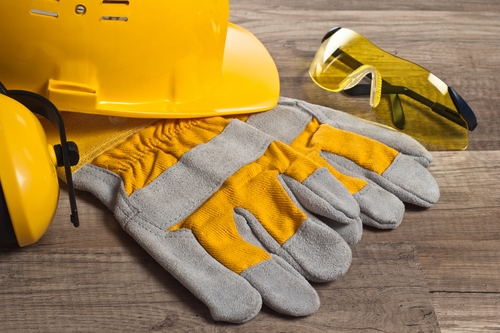
The U.S. Occupational Safety and Health Administration issued a warning about methylene chloride. OSHA released the hazard alert after a worker died following exposure to the chemical.
The warning came in the middle of August and provided an overview of what employees and employers should be on the lookout for. The individual who passed away was a temporary painter working alone and using paint stripper to remove the bathtub coating in an apartment bathroom.
To do so, the worker poured the paint stripper into the tub and began scraping. The bathroom, which was on the smaller side, only had one window available. Two hours later, the tenant arrived and found the worker slumped over unconscious and called 911. The worker was transported to the hospital, where the coroner determined he died from asphyxiation with acute methylene chloride toxicity.
Additionally, between 2000 and 2015, 17 workers died after they were exposed to high levels of methylene chloride while using paint stripping products. The substance is harmful enough that OSHA has developed guidelines for workplaces to follow when employees are around the substance.
What caused this?
As OSHA stated, when refurbishing a bathtub, any exposure to methylene chloride is considered dangerous. The risks magnify more so if the bathtub is located in a space with little to no outside ventilation available. Areas without proper indoor ventilation can also become dangerous for workers.
This recent incident was not the first time the deceased experienced a similar incident. After the first time, however, the employer did not take the necessary precautions to train, educate or enforce work standards regarding exposure to methylene chloride.
When paint stripping products are used in areas with little to no ventilation, chemicals build up and eventually reach a point that will severely harm a nearby worker. For example, the vapors from the paint stripper start to build up and eventually reach harmful levels that no one should be inhaling. The worker OSHA cited had a blood/methylene chloride level of 89 micrograms per milliliter.
Essentially, the paint worker was exposed to levels considered Immediately Dangerous to Life and Health, which is a designation implemented by the National Institute for Occupational Safety and Health.
“Any exposure to methylene chloride is considered dangerous.”
What is methylene chloride?
Methylene chloride is a colorless liquid that is found in many common substances, particularly used in the construction and manufacturing industries. Even regular homeowners might unknowingly interact with the volatile chemical, which is found in some of the following supplies and processes:
- Paint stripping
- Paint remover
- Pharmaceutical manufacturing
- Metal degreasing and cleaning
- Film base manufacturing
If employers and employees aren’t careful, they can easily find themselves overwhelmed by the toxic chemical, which they can be exposed to either by inhalation or skin contact. Per OSHA regulations, the permissible exposure limit during an eight-hour period is 25 parts methylene chloride per million parts of air.
Exposure to airborne chemicals is to not exceed 12.5 ppm. Employers are required to always inform workers about potential dangers if exposure levels exceed the limitations put forth by OSHA.
When exposed to the chemical, workers may feel:
- Dizziness
- Fatigue
- Nausea
- Numbness
- Weakness
At larger quantities, individuals will feel:
- Suffocation
- Loss of consciousness
- Coma
- Death
What employers can do
Employers have a responsibility to ensure their workers are in the safest conditions possible. When it comes to dealing with harmful chemicals, everyone at the work site should be informed of the standard requirements, in addition to practices to increase the safety levels.
Workers who handle substances containing the harmful chemical will need to be trained about the hazards and how to ensure protective measures are in place.
“Personal air respirators can be used in areas where ventilation is subpar.”
They will have to remind employees to check the conditions of the site beforehand for any problem areas, such as inefficient ventilation. Even so, companies should also provide the supplies necessary for safety while also monitoring the conditions the job is to be performed in.
Personal air respirators can be used in areas where ventilation is subpar. Furthermore, personal protection equipment will help guard against methylene chloride exposure to the skin.
Employers can take one further step by encouraging the use of products that provide an alternative to methylene chloride. For example, water-based and vegetable-based products represent a much safer approach to completing tasks like paint stripping, especially if the job entails working in a small space.
After the death of a worker, the dangers of methylene chloride can’t go unnoticed. Employers and workers have to work in tandem to ensure conditions are safe for the job. Companies can also visit OSHA for more information about the dangerous substance.








